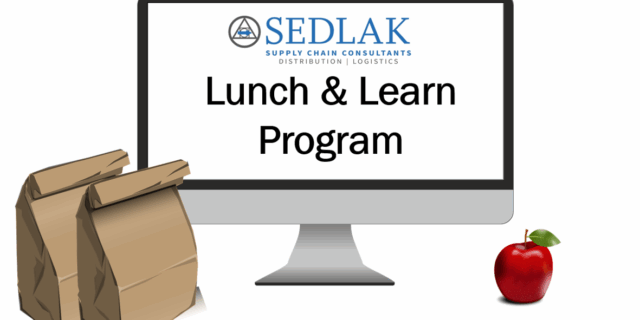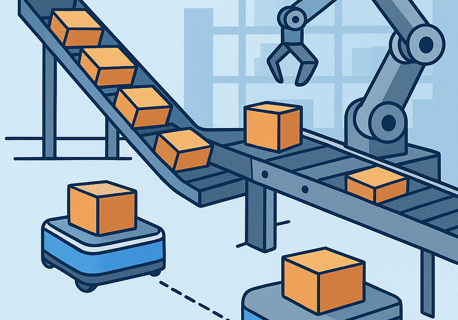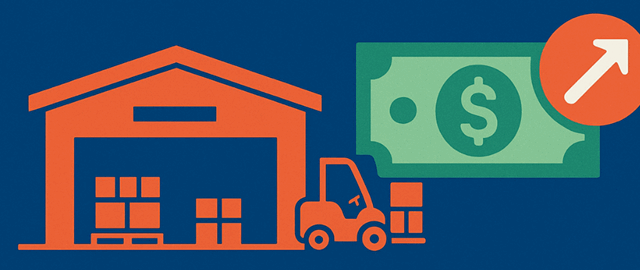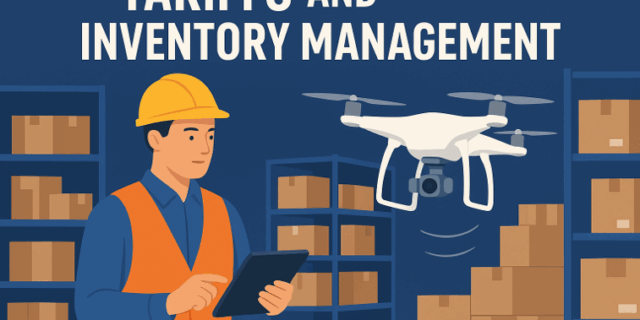Pop-up Stores? Now Pop-up Distribution Centers
October 12, 2017 By: Patrick S. Sedlak | Topics: Facility & Operation Design, IT Solutions, Network Strategy, Retail & CPGEveryone in retail is familiar with the pop-up store – think the Halloween costume place that takes up an empty storefront in the mall in October or the new skincare product kiosk at the airport. Now the pop-up concept is moving into distribution centers as a means to add temporary capacity quickly and cost-effectively. Here we explain what’s being called the “pop-up DC.”
What is a pop-up DC?
A pop-up DC is temporary operation designed to add capacity for a specific purpose such as a peak season, a new product launch, test entry into a new market, or a marketing promotion. It can also be used to test or temporarily take advantage of a new region for distribution where available labor may be more plentiful.
A pop-up DC is set up in an empty warehouse space under a short-term lease agreement – sometimes only a few months, but generally less than 2 years. This can be open space in an existing 3PL warehouse or a standalone facility. Carefully selected processes and inventory are moved into the space with the intent to drain the inventory by the targeted end of operation.
What is needed to set up a pop-up DC?
Well in advance of deployment, it is necessary to determine the location, processes, systems, and inventory that will comprise the operation.
Location may be focused on getting product closer to customers, supporting a specific market entry, or gaining access to a larger labor pool. For holiday peak, retailers may want to move high-demand inventory into their most prolific urban markets to enable better service levels and lower last mile delivery costs. In some cases, it is advisable to perform a high-level network analysis to help narrow the field of real estate options.
Pop-ups tend to engage more manual processes as highly automated material handling equipment is not designed for quick turnaround and setup. However, several robotics companies are developing picking solutions that may be perfect for a pop-up environment. Locus Robotics and 6 River Systems sell (and lease) robots designed for ecommerce fulfillment support that work alongside human pickers and can be set up in a couple of days without any additional infrastructure.
Integrating into your existing warehouse management software is critical, and additional licenses and implementation should be coordinated with your WMS provider and finalized well ahead of go-live. Depending on the complexity of your system, the level of automation you bring into the pop-up facility, and your picking methodology, this may require weeks or even months of advance planning.
Selecting the right inventory to be deployed is also a key enabler. For a holiday peak season pop-up, for example, the 1,000 fastest moving SKUs or SKUs purchased primarily as single-item ecommerce orders may be optimal. The idea is to stock the DC with inventory such that it will be completely drained by the end of the peak.
Why use a pop-up DC?
There are several reasons to consider adding pop-up DCs to your network:
Alleviate constraints in your network – Pop-up DCs are helpful when promotional or peak periods put too large a strain on the existing distribution network. If your current distribution operations are constrained by labor shortages, a pop-up can help you take advantage of available labor in another area. Locating a pop-up DC closer to customers for peak season can also reduce transportation costs and improve service levels.
Enable peak season ecommerce – If your current infrastructure does not have sufficient capacity to support forecasted peak volumes and opening a new permanent facility is not feasible, a pop-up DC can be a successful alternative. Retailers who do not have an expansive brick-and mortar footprint to enable buy online and pick up in store (BOPIS) or ship from store (SFS) options can leverage a pop-up DC close to customer centers to support timely and cost-effective “last mile” delivery of ecom orders during peak.
Test a new product or market entry – Piloting a new product or customer market using a temporary facility can help you effectively measure the results without making a substantial capital investment.
Test a new network location – A pop-up DC can enable you to assess a potential permanent addition to your distribution network. It can allow you to evaluate different shipping scenarios (e.g., shipping zones) to potentially reduce transportation costs without making a long-term commitment, and test the labor market if your other DC locations are facing labor constraints.
As a contingency for disaster preparedness – Should a fire or other disaster disable part of your distribution network, a pop-up DC capability may help mitigate the risk to your overall operation and service levels.
Although pop-up DCs are a relatively new concept in the industry, retailers and 3PLs alike are considering and testing it in various ways, and it is sure to gain traction given the challenges of retail distribution in an Amazon world.
Since 1958 Sedlak has provided independent, innovative and actionable distribution solutions to retailers, 3PL providers, wholesalers and healthcare providers. Our precision data analytics, focus on process improvements, and intelligent use of technology help companies achieve operational efficiencies and satisfactory return on investment. To learn more, complete the Contact Us form below.






